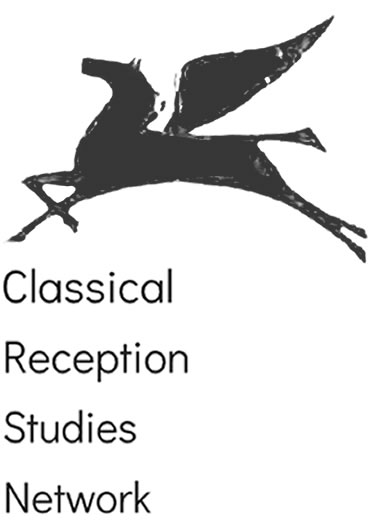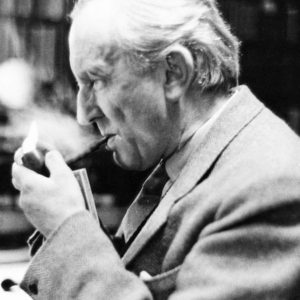by Hamish Williams
During the recent Christmas break I treated myself to a rereading of C.S. Lewis’ Chronicles of Narnia series (“a strictly academic procedure”, I informed my wife, as Bulgakov’s master-piece and other important works of literature lay half-digested on the floor). Lewis’ worldbuilding is rich in overt intertextuality, and throughout his children’s fantasy series one can detect the legacies of his Classical training: the Latinate suffix and mythic pedigree of the faun Mr Tumnus in The Lion, the Witch and the Wardrobe; the Euripides-inspired Maenads of Prince Caspian; and, in The Horse and His Boy, the Roman-like elites of Tashbaan in Calormen who are carried about on litters by slaves. Indeed, in The Voyage of the Dawn Treader, at one point during their sea adventure, the talking mouse Reepicheep suggests binding Prince Caspian to the ship’s mast (Caspian has by then become too thirsty for ‘worldly’ enlightenment), to which Edmund makes the obvious analogy—“like they did with Ulysses when he wanted to go near the Sirens”.
Unlike his friend, fellow academic, and member of the Inklings, J.R.R. Tolkien does not engage in such intertextual references which poke holes into the fabric of the internal narrative of a story world; the beauty of Tolkien’s Middle-earth, instead, lies in the depth and coherence of the intratextual creations. This has, of course, not stopped scholars from inquiring into the provenance of the Englishman’s fantasy world. What were the other domains and influences which shaped the world that has, perhaps more than any other, determined the rules for the modern fantasy genre?
The influences on Tolkien’s writings of medieval literature and society, of the natural world, and of Christianity have all received adequate scholarly discussion. And there is certainly substantial biographic justification for all these approaches. Tolkien was primarily a scholar of Old English (in particular, an acclaimed critic of Beowulf) and of Anglo-Saxon culture, and it is perhaps no coincidence, then, that a large flock of contemporary scholars of Tolkien are Medievalists. Tolkien also had a profound love of nature, in particular, trees, and was dismayed by the rapid, sprawling urbanisation of Birmingham towards his youthful green paradise in Sarehole (a love which led to the creation of his Ents, talking and walking trees). And, lastly, Tolkien was a devout Roman Catholic, a belief which was doubtless fostered by the tutelage of Father Francis Morgan, who became something of a father figure to Tolkien after the death of his mother (Tolkien was twelve at the time).
What has, however, been somewhat neglected in interpretations of Tolkien’s works (and in fantasy writing more generally until quite recently) has been the influence of the Classical world of ancient Greece and Rome. There are several biographic details from Tolkien’s early life and school years which endorse such an exploration. Tolkien’s love for philology was awakened by his mother’s instruction in Latin, in which he is said to have shown far more interest than in his French or music lessons (Carpenter 29–30), while of his introduction to Greek, Tolkien himself once wrote: “the fluidity of Greek, punctuated by hardness, and with its surface glitter captivated me. But part of the attraction was antiquity and alien remoteness (from me): it did not touch home” (Carpenter 45–46). Indeed, Tolkien claimed to have “first discovered the sensation of literary pleasure in Homer” (Letters 172). In general, one should point out that the then Classics boys from King Edward’s School held regular debates in Latin and put on an annual Aristophanes play in the original Greek (Tolkien played Hermes in Peace) (Garth 17–18).
Among biographers such as Humphrey Carpenter and John Garth, however, the general impression created of Tolkien’s Classical journey is one of initial curiosity and then inevitable decline (especially during his undergraduate years at Oxford, in which he majored in Classics, like Lewis) as he was gradually drawn more to Norse, Anglo-Saxon, and Welsh. Perhaps, the Classics had indeed become ‘too close to home’ for Tolkien. However, one should be wary of the intentional fallacy, as Wimsatt and Beardsley termed it; even if Tolkien himself consciously spent most of his professional career on non-Classical texts, can we truly discount the latent impact on his literature of so strong a schooling in Classics?
In fact, we know that long after his graduate days, when he was working on his monumental epic The Lord of the Rings, Tolkien would occasionally have ‘Classics on the mind’. Thus, for example, when he was penning the chapter ‘Minas Tirith’ in The Return of the King, he scribbled down the words “Homeric catalogue” at the top of his manuscript for the scene when the various chiefs of Gondor march into the great seven-tiered city (it was omitted from Jackson’s film, unfortunately, in favour of a suicidal cavalry charge).
What other remnants of the Classical world can we find in Tolkien’s fantasy landscapes? In Tolkien and the Classical World, an edited volume to be published by Walking Tree Publishers (Jena, Germany), scholars have been invited to trace the Classical legacy in the writings and thoughts of the English academic and novelist. The volume welcomes proposals from interested contributors; further details can be found here.
List of References
Garth, J. 2003. Tolkien and the Great War: The Threshold of Middle-earth. London: HarperCollinsPublisers.
Carpenter, H. 2000 [1977]. J.R.R. Tolkien: A Biography. New York: Houghton Mifflin.
Tolkien, J.R.R. 2006 [1981]. The Letters of J.R.R. Tolkien [aka Letters]. London: HarperCollinsPublishers.
About the author
Hamish Williams holds a PhD in Ancient Greek Literature from the University of Cape Town (2017). He currently teaches International Studies at Leiden University. From mid-2019, he will be pursuing a Humboldt Fellowship at the Department of English and American Studies at Friedrich-Schiller-Universität Jena.

